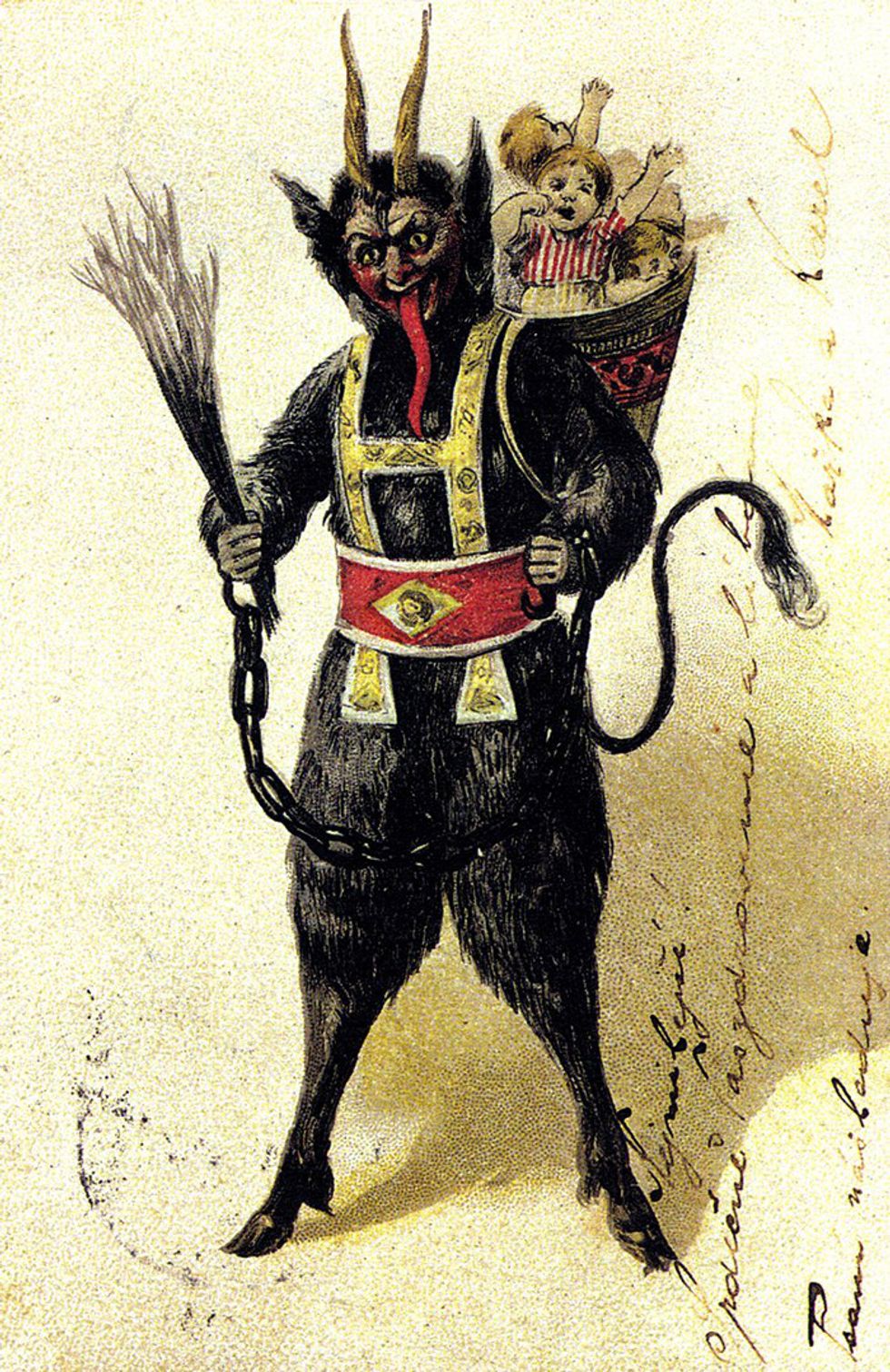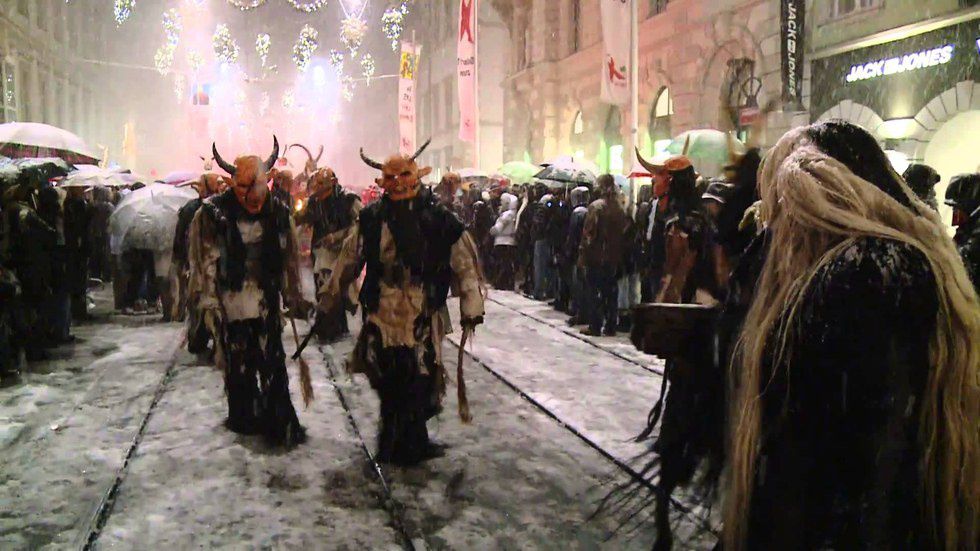The story of Krampus folklore is found to originate in Germanic folklore as early as around the 1600s and said to be the son of Hel in Norse mythology. Krampus is believed to be a beastial creature who accompanies St. Nicholas on his journey. Krampus is a towering, seven foot tall, hairy creature, depicted as having bulging eyes, a whip-like tongue, pointed ears and horns atop his head. He carries a pitchfork or, more traditionally, a bundle of birch switches, to menace children as he travels through town on a pair of mismatched feet: one cloven hoof, the other a bear-like claw.
While St. Nicholas rewards the good children with gifts and sweets, Krampus dispenses punishment to the children on the "naughty" list. According to folklore, Krampus purportedly shows up in towns the night before December 6, known as Krampusnacht, or Krampus Night. December 6 also happens to be Nikolaustag, or St. Nicholas Day, when German children look outside their door to see if the shoe or boot they'd left out the night before contains either presents or a rod. Children caught by Krampus are spanked, whipped and even shackled to be spirited away in either a basket or barrel to Krampus' lair. Once there they receive further punishment until they are repentant.
In Austria, Germany, Hungary, Slovenia, and the Czech Republic the tradition became a sort of "Krampus Run" or Krampuslauf . It involves drunken people dressed as devils; they take over the streets and scare people.





















